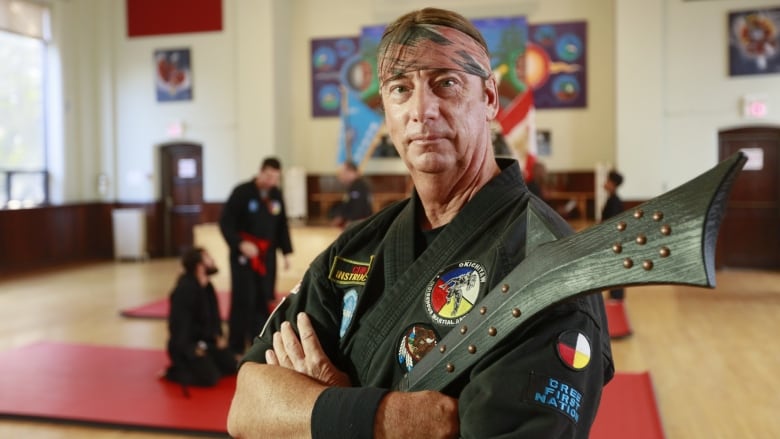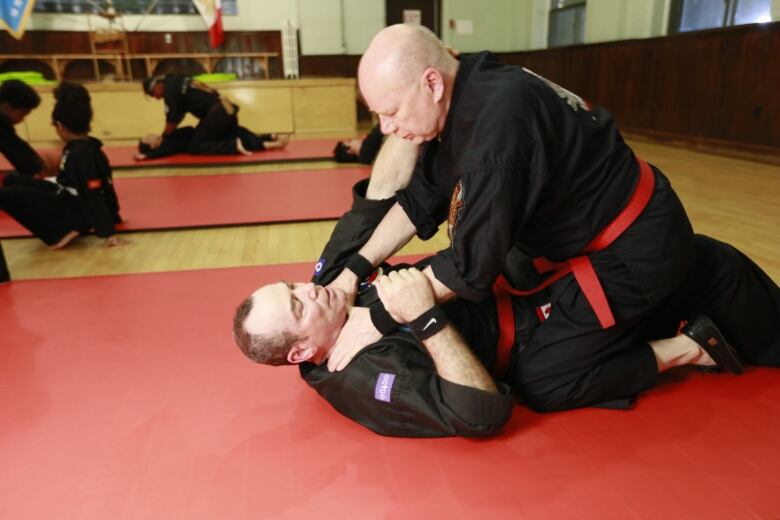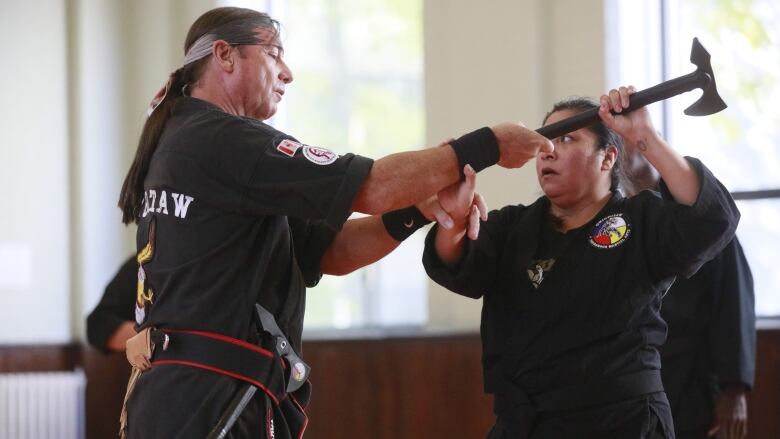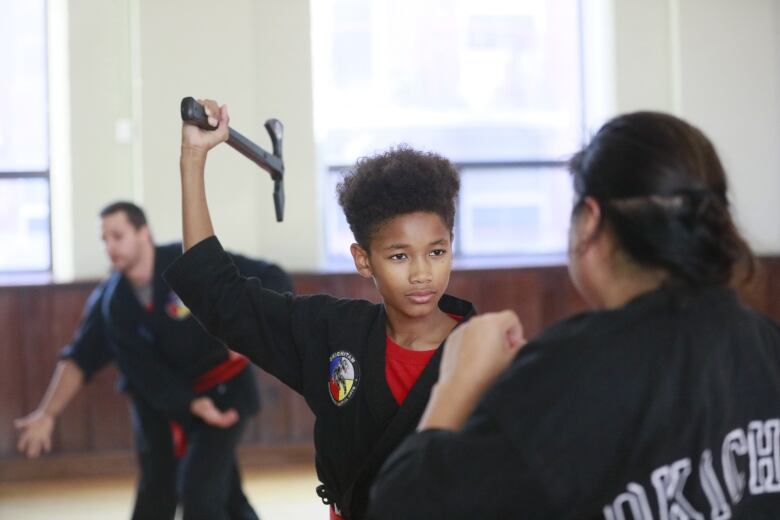Toronto instructor fighting to save Indigenous martial art
It's 'intimidating' to be one of the last people qualified to teach Okichitaw, George Lepine says

George Lepinelooks on as his studentslearn how to flip an attacker coming at them with a weapon.
The class looks similar to karate or tae kwon do, right down to the black martial arts outfits the students wear, but theself-defence practice Lepineis teaching them is from North America, not Asia.
It's calledOkichitaw, an Indigenous martial art passed down the generations by the Cree.
Lepine, 56, istrying to ensure it survives.
"It has to go on in the future," says Lepine, who learned the techniques from his uncles when he was growing up as a Plains Cree in Southern Manitoba.
"It's intimidating for me knowing that I'm one of the last ones able to hold this information, but I need to share it with others to make sure that we move forward with it."

Some of the students say it's helped them overcome struggles and re-connect with their roots, likeJohnathan Whittaker.
"This system is really good for those wounded warriors," he explains, including people dealing with substance abuse or those who are ashamed of their ancestry.
Whittaker says he was one of those people but that Okichitaw "helped strengthen me and reinstate that belief that [I]come from a proud culture."

Okichitawwas passed along by oral traditions before, but Lepine says he worked for years with the elders to write down the rules and develop the practiceso it could be formally recognizedfirst by theWorld Martial Arts Union, then by the United Nations Education, Scientific and Cultural Organization (UNESCO) in 2002.
He currently teaches it three times a week at the Native Canadian Centre of Toronto on Spadina Avenue just north of Bloor Street,in addition totravelling across the country to give courses.
According to the Okichitawwebsite, Indigenous weaponry such as the tomahawk, lance, warclub and knife are used in advanced training.

Lepine has also turned to technology to be able to share the martial art more widely, offering videos thathe sayscut down the distance to more isolated communities.
He says most of hisstudents have at least some Indigenous heritage, though non-Indigenous people have also taken his classes.
Studying the martial art, Lepinesays, involves more than just learning to fight, with some sessions done outdoors to teach students about the importance of the land.
"If you're coming in just to learn to strike ... I'm sorry, you're not going to be terribly happy."

He isn't the only one searching for ways to ensure the practice of Okichitaw continues, with some of his students also focusing on sharing what they've learned.
Whittaker, who is a consultant in his day job, also wants a role in bringing the martial art to others.
"I see us opening up a studio," he says.
"Basically, I see expansion."
With files from Richard Agecoutay












_(720p).jpg)


 OFFICIAL HD MUSIC VIDEO.jpg)
.jpg)



























































































